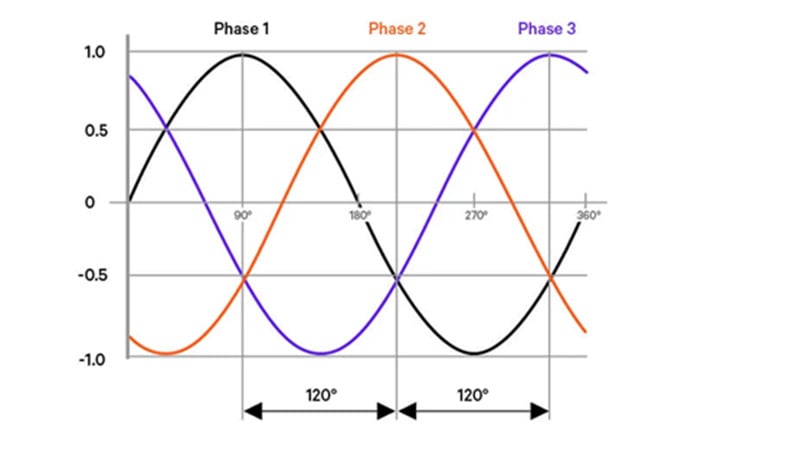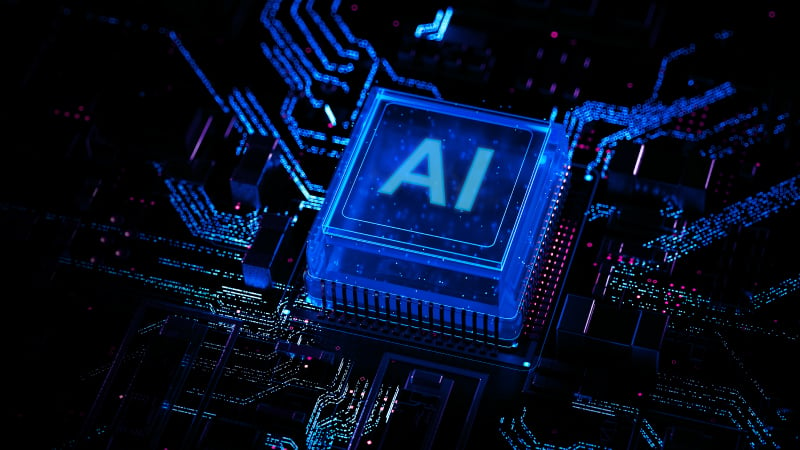Yüksek performanslı bilişimin (HPC) iş yükleri gittikçe artıyor ve yakın bir zamanda azalacak gibi görünmüyor. Bloomberg, üretken AI’ın 2032 yılına kadar 1,3 trilyon dolar değerinde bir iş olacağını, BT performansında GPU iyileştirmelerinin ise yalnızca 10 yılda bin kat büyüdüğünü; bunun, aradaki daha kısa sürelerde gelişmelerin önceki sürümleri hızla geride bırakmasıyla gerçekleştiğini bildiriyor.
İş yükleri arttıkça veri merkezi operatörleri de enerji talebindeki artış nedeniyle artan güç dalgalanmalarından kaynaklanan zorluklarla karşılaşıyor. Bu da operatörleri, HPC iş yüklerini verimli bir şekilde desteklemek için veri merkezi gücünde yenilik yapmaya yönlendiriyor.
Güvenilir bir güç kaynağı için önce güvenilir bir güç aktarma sisteminin ve kesintisiz operasyonun sağlanması gerekir. Güç aktarma sistemindeki unsurlardan biri olan kesintisiz güç kaynakları (UPS); güvenilirlik, güç kesintilerine karşı koruma, BT ekipmanlarına kesintisiz elektrik dağıtımı ve operasyonel verimliliğin korunması için çok önemlidir.
AI için veri merkezi güç aktarma sistemini anlama
Güç aktarma sistemi (bkz. Şekil 1); switchgears donanımları, UPS’ler, güç dağıtımı birimleri (PDU’lar) ve diğer hayati bileşenlerden oluşan, şebeke gücünden BT ekipmanına uzanan bir güç dağıtımı yapısıdır. Bu teknolojiler, bir arada çalışarak veri merkezlerine elektrik sağlar.

Resim 1. Güç aktarma sistemi diyagramı
Entegre bir sistem, kesintilere karşı koruma sağlamak ve operasyonları kesintisiz sürdürmek için güvenilir elektrik gücü ve yedekleme çözümleri sunar. Bu şekilde maksimum çalışma süresini destekler. Bu kurulumun verimliliğini anlamak için elektrik akışına bakalım ve her teknolojinin genel işleve nasıl katkıda bulunduğunu inceleyelim:
- Şebeke veya yenilenebilir enerji kaynağı: Veri merkezi altyapısının güç kaynağı burasıdır.
- Otomatik transfer switch: Ana güç kesintisi durumunda yedek güç kaynaklarına sorunsuzca geçiş yaparak kesintisiz operasyon sağlar. UPS dışında, bu yedek güç kaynakları şunları içerir:
- Yakıt hücreleri: Hidrojenle çalışır ve ana veya yedek güç kaynağı olarak işlev görebilir.
- Uzun ömürlü aküler: Geleneksel UPS akülerine göre daha yüksek güç kapasitesi ve dayanıklılık sunar.
- Kritik switchgear donanımı: Şebeke gerilimi dalgalanmaları veya kısa devreler gibi harici arızalara karşı gücü veri merkezinin ağına yönlendiren ilk savunma hattıdır. Ayrıca, bakım veya onarım sırasında ekipmanı izole eden hayati bir güvenlik önlemi olarak işlev görür.
- UPS: Şebeke kesintileri sırasında kritik güç yedeği sağlar. Ayrıca, şebekeden gelen gerilim dalgalanmalarını veya artışlarını filtreleyerek bir tampon görevi görürler. Güç şebekesi kesildiğinde akü enerji depolama sistemine (BESS) döner.
- BESS: Gücü tamponlayarak tedarik edilen güçteki kısa süreli farklılıkları giderir. UPS gibi, yerel bir alan için enerji rezervi olarak da güç depolayabilir.
- Statik transfer switches: Elektrik yüklerinin, güç kaynakları arasında anında transferini sağlayarak kesintisiz ve güvenilir gücü korur.
- Güç dağıtım birimleri (PDU) ve uzak panel: Gücü çeşitli bilişim düğümlerine ve depolama sistemlerine verimli bir şekilde dağıtır.
- Busbar ve rack PDU: Kurulu bilişim kaynaklarından gelen güç talebini doğru bir şekilde karşılayarak BT ekipmanlarına güç sağlar.
AI iş yükleri, BT’deki güç dinamiklerini yeniden şekillendirerek şebeke kapasitesine ve operasyonel karmaşıklığa yeni zorluklar getiriyor. Artan kabin yoğunluklarına rağmen veri merkezi güç altyapısı ve teknolojileri aynı kalıyor. Bu durum, veri merkezi sahiplerine ve operatörlerine, güç aktarma sistemindeki her varlığın şebekeden, tüm altyapının kritik bileşenlerine sorunsuz bir şekilde güç sağlaması konusunda zorluk çıkartıyor.
UPS, güç kesintileri sırasında kesintilerin azaltılmasında ve sürekli ve güvenilir elektrik akışı sağlanmasında kritik bir rol oynar. Doğru UPS sistemini seçmek, veri merkezi operatörlerinin, HPC uygulamalarının getirdiği güç yükünü yönetmesine yardımcı olabilir.
UPS, AI ve HPC yükünü nasıl yönetir?
UPS birimi, veri merkezi güç aktarma sisteminin omurgasıdır ve güç iletimini stabilize etmede önemli bir rol oynar. UPS birimleri, güç dalgalanmalarını azaltarak ve kesintiler sırasında anında yedekleme sağlayarak kritik bilişimsel görevlerin kesintisiz devam etmesini sağlar.
Tutarlı ve dengeli güç sağlar
Üç faz güç sistemleri, sürekli olarak daha yüksek düzeylerde dengeli güç sağlayabilir. Üç faz bir sistemdeki her akım 120 derece ayrılır (bkz. Şekil 2). Bir faz tepe noktasına ulaştığında diğer ikisi güç katkısında bulunmaya devam eder ve iletimdeki herhangi bir düşüş önlenir.

Resim 2. Üç faz AC güç sistemleri
Öte yandan, tek faz AC güç sistemlerinin akım taşıma ayakları her zaman 180 derece ayrılır (bkz. Şekil 3). Sonuç olarak, yüke güç iletilmeyen çevrimler vardır. Bu da tek faz AC’yi yalnızca ev ve hafif ticari uygulamalar için uygun bir enerji kaynağı haline getirir.

Resim 3. Tek faz AC güç
Üç faz sistemin kesintisiz olarak tutarlı güç sağlama kabiliyeti, onu yüksek güçlü bilişim uygulamaları için ideal bir seçim haline getirir. Sabit ve dengeli güç iletimi, performanstan ödün vermeden veya kritik ekipmana herhangi bir hasar vermeden AI iş yüklerinin sık sık değişen taleplerini destekleyebilir. Ayrıca güç israfını azaltıp verimliliği artırarak enerjinin daha iyi kullanılmasına olanak tanır.
Vertiv’in büyük üç faz UPS’leri, yüklerde bulunan aktif harmonikleri aktif olarak simgeleyen ve nötrleyen gelişmiş invertör kontrol algoritmalarını kullanır. “Talepkâr” AI yüklerinin ve yüksek harmonik içeriklerinin getirdiği zorlukları ele alır. Bu çözümler, karmaşık AI iş yüklerini çalıştıran sistemlerin performansını ve güvenilirliğini artırarak daha temiz bir güç kaynağı sağlar.
Sürekli ve yüksek kaliteli AC güç sağlar
Çevrimiçi çift çevrim UPS sistemleri, sorunsuz BT operasyonları için gerekli olan sürekli, yüksek kaliteli AC gücü sağlar. AC ve DC arasındaki dönüşüm, bu sistemleri gerilim sorunlarına karşı korur ve ekipman hasarını önler. Ayrıca, bakım veya arıza sırasında kesinti süresi riskini azaltan sağlam bir dahili bypass özelliğine sahiptir.
Çevrimiçi UPS sistemleri, kritik yükleri güç kaynağı düzensizliklerinden izole ederek tüm güç sorunlarına karşı koruma sağlar ve AI sistemlerinin sabit, temiz enerjiyle çalışmasını sağlar. Mükemmel bir sinüs dalgası çıkışını sürdürme ve kesintiler sırasında aküye sıfır transfer süresi sağlama özellikleri, veri kaybını önlemede ve kesintisiz operasyonları garanti etmede çok önemlidir.
UPS sistemlerine sıvı soğutma teknolojisinin entegrasyonu, soğutucu dağıtımındaki mekanik yükler için hayati önem taşıyan sürekli güç kaynağının sağlanması açısından çok önemlidir. Güvenilir soğutma sistemleri, ekipman ve tesisler için optimum sıcaklığı korur. Gelişmiş UPS sistemleriyle veri merkezi operatörleri, güç kesintileri sırasında soğutma mekanizmalarının kesintisiz devam etmesini sağlayarak yüksek yoğunluklu bilişim ortamlarında sürekli güç ihtiyacını vurgulayabilir.
Enerji depolama çözümlerine sorunsuz bir şekilde geçiş yapar
Şebeke etkileşimli UPS sistemleri, AI uygulamalarından kaynaklanan elektrik ihtiyaçlarının yönetilmesine yardımcı olmak için BESS gibi enerji depolama teknolojileriyle çalışır. Kesintiler sırasında veya talep yüksek olduğunda bile her zaman güç sağlarlar. Hızlı frekans rezervi (FFR) kabiliyetleriyle UPS birimleri, arz-talep dalgalanmalarına hızlı bir şekilde yanıt vererek depolanmış enerjiye kesintisiz bir geçiş sağlar. Bu, yoğun AI ve HPC iş yüklerine sahip veri merkezleri için hayati önem taşır.
BESS, AI yükünü dengelemek üzere UPS ile birlikte çalışarak talep düşük olduğunda ekstra enerjiyi depolar ve AI operasyonlarında gücün korunması için yoğunluk sırasında enerjiyi iletir (“tepe noktası takviyesi” olarak da adlandırılır). Bu kombinasyon aşırı yükü önler, çalışma verimliliğini korur ve geleneksel güç kaynaklarına olan bağımlılığı azaltır.
AI/HPC yerleştirmenizi güçlendirir
Yüksek kapasiteli UPS sistemleri, tüm güç aktarma sistemleri için sağlam bir omurga görevi görerek veri merkezlerinin AI yük taleplerini yönetmeye yardımcı olabilir. Ancak artan AI ve HPC iş yüklerinin gereksinimlerine yönelik hazırlanmak için güvenilir bir UPS’ten daha fazlası gerekir.
Vertiv, AI ve diğer HPC iş yüklerini işleyen veri merkezlerine geniş destek ve uzmanlık sağlayan kapsamlı bir çözüm sunar. AI/HPC için çok çeşitli sektör ürünü kategorisi ve teknolojisi sunuyoruz. Daha yüksek yoğunluklar için ister yepyeni teknolojilere ister donanım iyileştirme sistemlerine ihtiyacınız olsun, her zaman yanınızdayız.
Yüksek Yoğunluğa Giden Yolunuzu Seçin
Yüksek yoğunluk konusunda yolculuğunuz sorunsuz olabilir. Vertiv, en zorlu yerleştirmelere güç sağlamak ve soğutmak için sektör liderleriyle tasarlanan gelişmiş çözümler sunar. Vertiv ile AI Evriminizi hemen başlatın.






